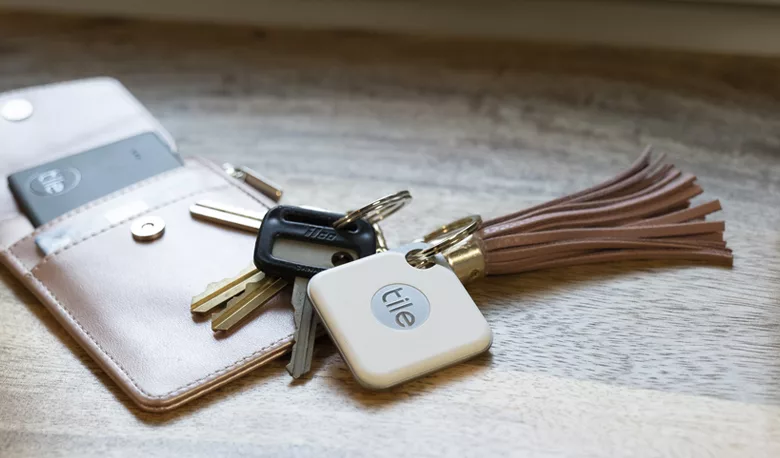Honey, Where Are My Keys?

I recently noticed several pairs of reading glasses hanging from ornate hooks in every room of my friend’s home. She explained she often loses her “cheaters.” Her solution was to buy a case of glasses with which to populate each room.
I said I wished I could afford to do that with my keys. She laughed. Then, she took out her phone, opened an app, swiped, and poked — and a tone chimed from the other room.
That is how my friend finds her keys.
If you misplace keys or other items, an electronic finder might be a good investment.
There are more than 20 different finders on the market, ranging from $9.99 to $49.99. They come in a variety of shapes, sizes, and colors, with an even broader array of features.
Button-style finders have a peel-stick backing and can attach to items like your TV remote. Others have a ring attachment for keys and can fit in your suitcase to more easily find it amongst the stacks in the concierge storage closet. Slim finders slide discretely into your wallet, purse, or tablet case.
Research “key finders” online to find:
- Finders with non-replaceable batteries. Nice price, but entire units might need to be replaced often.
- Finders with signal ranges between 20 and 400 feet. The stronger the signal, the less aimless walking.
- Finders with a loud alarm. The best run 80 to 85 decibels.
- Finders that trigger a smartphone’s ringer and broadcast its GPS location.
- Finders with a geofence warning that sounds when you wander out of a tag’s range. Often requires subscriptions.
Some finders come in multi-packs that can reduce unit price by as much as 40%.
Even though these devices are commonly referred to as “key finders,” you are limited only by your imagination as to what you can tag to find more easily. Your dog? Your car? Perhaps even that last slice of chocolate cake!








